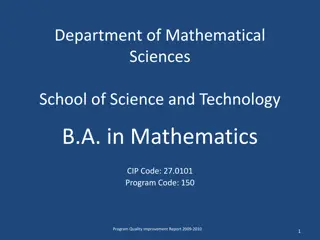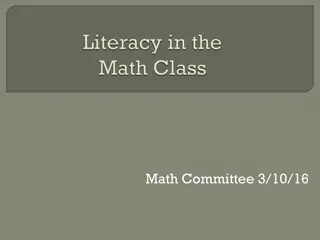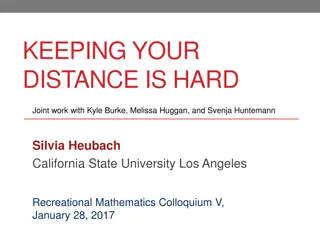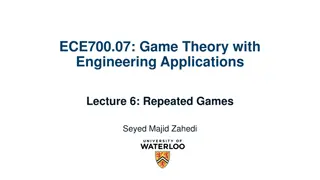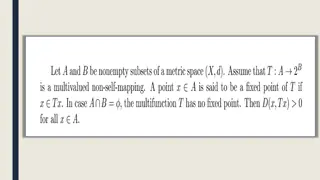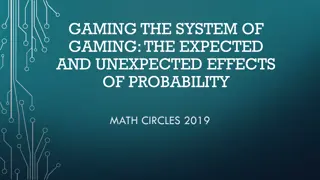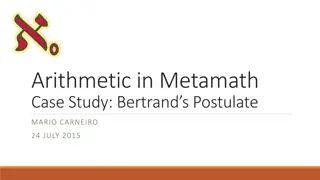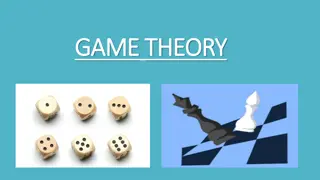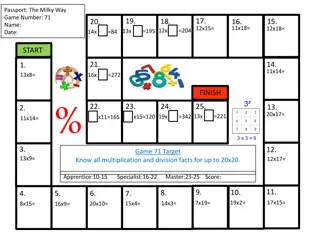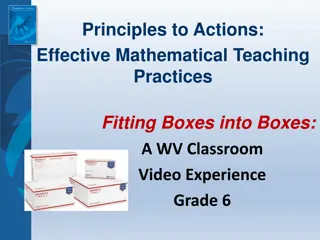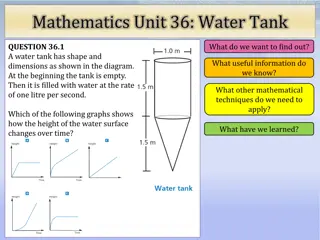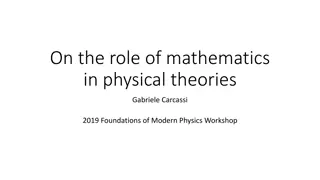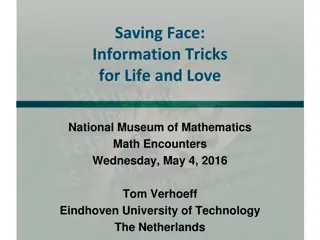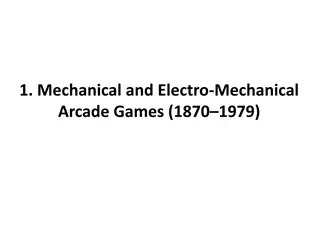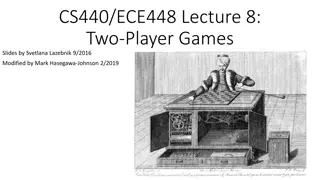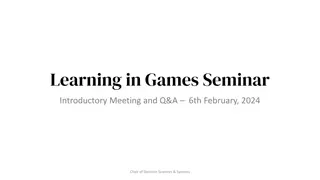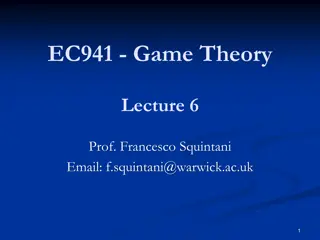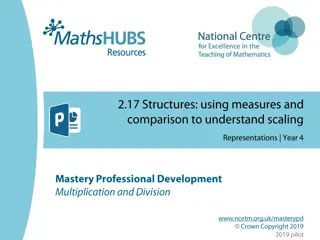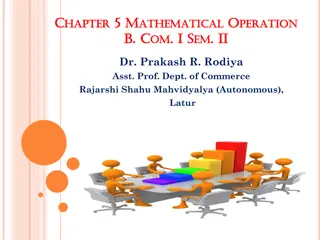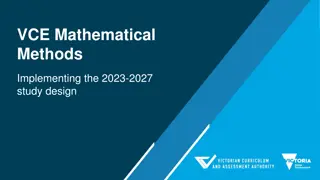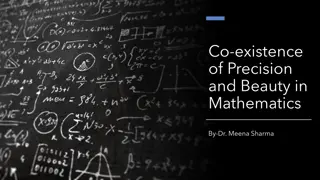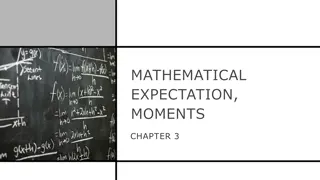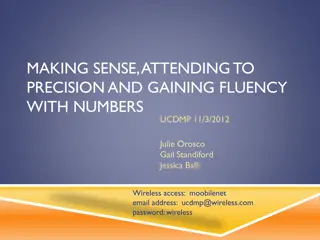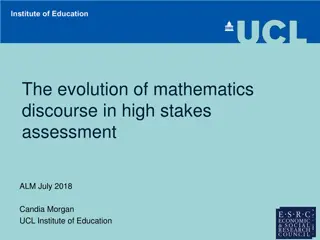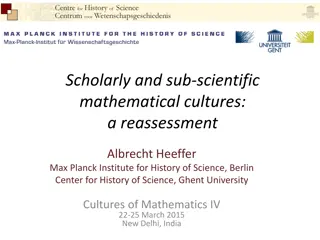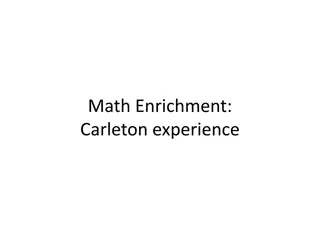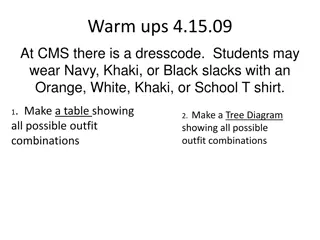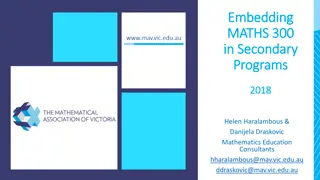Principles of Good Mathematical Games
An exploration of the key principles behind engaging and effective mathematical games, including the importance of student engagement, balance between skill and luck, and the central role of mathematics in game design. These principles guide educators in selecting and creating math games that enhance learning and foster mathematical discussions in the classroom.
Download Presentation

Please find below an Image/Link to download the presentation.
The content on the website is provided AS IS for your information and personal use only. It may not be sold, licensed, or shared on other websites without obtaining consent from the author. Download presentation by click this link. If you encounter any issues during the download, it is possible that the publisher has removed the file from their server.
E N D
Presentation Transcript
What makes a good mathematical game? James Russo @surfmaths and Toby Russo @tobyrusso
Ready, Steady, Add - Teacher chooses target number (1-20) - Students work in pairs; they can t communicate. - Students say Ready, Steady, Add ; they throw 1-10 fingers. - They continue until they reach the target number. - When they reach their target number, they put their fingers above their heads. - The teacher records their sum and gives the group a new target number. Carmel Godfrey, 2018. Ready, Steady, Add. Prime Number Vol.1 2018.
How do you decide which maths games to play in your classroom?
Overview - Introducing the 5 Principles of Educationally Rich (Good) Mathematical Games - Playing games and connecting them to these principles - Workshopping a game
Principle 1. Students are Engaged - Games should be engaging, enjoyable and generate mathematical discussion. - Games generate more on-task behaviour and dialogue than non-game based activities (Bragg 2012) - Games students are not motivated to play are unlikely to generate positive learning outcomes compared with alternative activities.
Principle 2. Skill and Luck Are Balanced - - - - Without luck, more able students will dominate. Without skill, intrinsic motivation is limited. Balance between luck and skill engages students. Balance can have positive social impact; i.e. all students need to learn to be a good loser or gracious winner .
Principle 3. Mathematics is Central - Games are used purposefully; chosen game matches specific learning objective. Games could be focused on: - Skill practice (e.g. addition facts) - Strategic thinking / problem solving (e.g. nim games) - Exposure to new concepts (e.g. over/under) -
Principle 4. Flexibility for Learning and Teaching - Games should cater to varied ability levels - Through game dynamics (e.g. count-on vs partitioning) - Through game mechanics, i.e. modifications (e.g. number of hands used, target number provided) - Through supporting materials (e.g. hundreds chart)
Principle 5. Facilitates Home-School Connections - Games can be a tool for building positive connections between home and school - Help parents/carers understand mathematical concepts being taught - Help parents/carers recognise value of reasoning strategies vs rote memorisation - Students as experts Simplicity of the game structure Easily available materials - -
Principle 5. Facilitates Home-School Connections Multiple Mysteries
Skip-Counting Bingo Materials: 100-chart, 6-sided dice 1. Students choose three Bingo numbers in turn, and mark these on 100-chart. 2. Roll a 6-sided dice. Together students count by whatever the number rolled, using the 100-chart to keep track. 3. Students stop counting when they encounter a bingo number. 4. The dice is rolled again, and a new counting sequence is explored. 5. Play continues until one of the players removes all their numbers and shouts Bingo! .
Skip-Counting Bingo - How does this game connect to the 5 Principles - What are some modifications you could make?
Multiple Mysteries Materials: Calculator, playing cards (Jacks are zero; remove 10, Q, K) 1. Choose a target number (e.g., 3, 5, 8). 2. Five cards are dealt to each player. 3. First player uses some or all of these cards to make a multiple of the target number . One point scored for each card used; bank these cards, and replenish hand to 5 cards. 4. Opponents can challenge the player s multiple, using a calculator and dividing the created number by the target number. If correct challenger banks cards; if incorrect pay a one card penalty. 5. Play continues in turn. Once all the cards in the deck are used, banked cards are counted.
Multiple Mysteries - How does this game connect to the 5 Principles - What are some modifications you could make?
Workshopping a Game - Choose a game you know and use. Describe it. How does it meet these principles? How might you modify it? - - -
Summary - Goal of this session: to start a discussion about reflecting on what makes a good maths game - Take this discussion to your schools - APMC Paper and other published work can be accessed through Research Gate (James Russo and Toby Russo) - Feel free to contact us to share your ideas and experiences (james.russo@monash.edu and toby@bellps.vic.edu.au)



